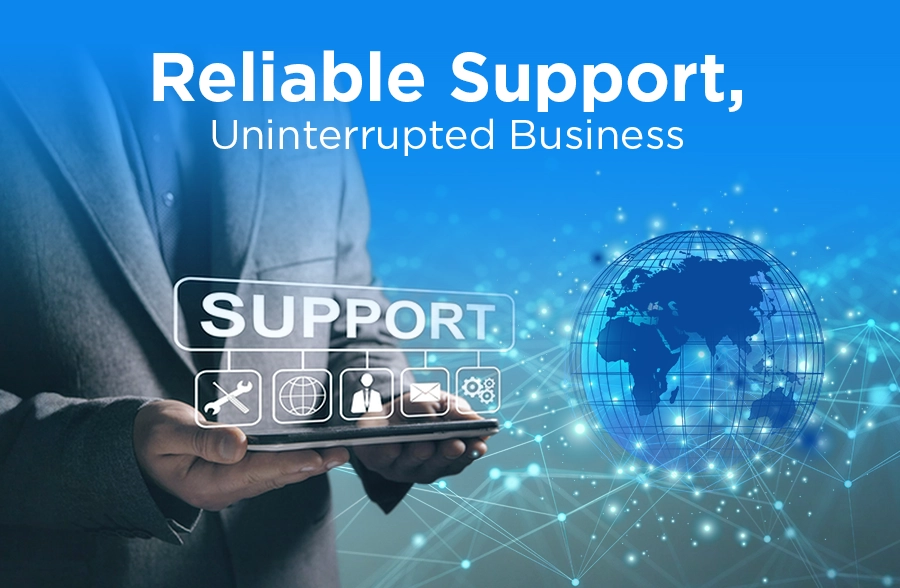Schedule a FREE call with our outsourcing expert now and get a precise quotation that meets your requirements. Don't wait - get started today!
Outsourcing software development opens up valuable opportunities for SMEs—giving you access to skilled teams, reducing costs, and speeding up project timelines. However, it also comes with its own set of challenges. From dealing with time zone differences to maintaining consistent product quality, outsourcing can seem like a balancing act.
The good news is that these challenges are common and manageable. With the right tools, clear communication, and well-set expectations, you can easily overcome any obstacles and ensure your outsourcing project stays on track.
Let’s explore how you can tackle these challenges and make outsourcing a seamless part of your business growth.
1. Time Zone Differences: How to Make It Work
One of the most common challenges when outsourcing is managing time zone differences. When your outsourcing partners are on the other side of the world, it can be tough to sync work hours.
Why does this matter?
Imagine sending an email and waiting hours for a reply. Time zone gaps can lead to slow communication, missed deadlines, and frustration. But this challenge can be tackled with a bit of planning.
Tips to overcome time zone challenges:
- Set clear working hours: Agree on overlapping working hours where your team and the outsourced team can connect.
- Use collaboration tools: Tools like Slack, Asana, or Microsoft Teams can help keep communication seamless across different time zones.
- Plan ahead: When starting an outsourcing project, set realistic deadlines considering the time zone differences.
Fun fact: Did you know that 52% of business leaders believe that the time zone difference can lead to communication issues?
2. Maintaining Quality Control Across Remote Teams
Managing the quality of your software development process when working with an outsourced team can feel like a balancing act. Without direct oversight, it can be tough to ensure that the product meets your standards.
What you can do:
- Define clear quality standards: From the very beginning, set expectations for code quality, design, and user experience.
- Regular check-ins: Keep up with weekly or bi-weekly meetings to monitor the progress and address concerns early.
- Leverage project management software: Tools like Jira or Trello can give you insight into the workflow and help track issues.
- Testing and feedback loops: Include frequent testing stages throughout the project to catch potential issues early.
Quality assurance in outsourced software development doesn’t have to be a hassle if you lay the right foundation.
3. Open Communication: The Bridge to Successful Collaboration
Effective communication is often the deciding factor between successful and failed outsourcing projects. Miscommunication can lead to misunderstandings and project delays.
How to make communication smoother:
- Set communication guidelines: Agree on preferred communication channels (email, Slack, video calls) and response times.
- Document everything: Ensure all project details, changes, and updates are well-documented for future reference.
- Encourage regular updates: Establish a routine for progress reports and project updates to avoid surprises.
Open communication builds trust and helps you stay aligned with your outsourcing partners.
4. Protecting Sensitive Information: Safeguarding Your Business
Outsourcing software development often means sharing sensitive business information with external teams. While most outsourcing partners take privacy seriously, taking steps to protect your data is still essential.
Ways to protect your sensitive information:
- Non-disclosure agreements (NDAs): Have clear NDAs before you share sensitive details with your outsourced team.
- Secure communication tools: Use encrypted communication platforms to ensure data security.
- Access control: Only provide access to the tools or information necessary for the outsourced team to perform their job.
- Regular audits: Conduct regular security checks to ensure compliance and minimize data breaches.
Protecting your sensitive information ensures your business stays secure throughout the outsourcing process.
5. Ensuring Long-Term Success with Outsourcing Partners
Selecting the right outsourcing partner is key to long-term success. When you outsource software development, you’re entering a partnership that requires mutual trust, understanding, and alignment of goals.
Key points to consider when choosing an outsourcing partner:
- Industry experience: Look for partners with expertise in your industry, as they’ll better understand your business needs.
- Reputation: Check reviews, case studies, and client testimonials to verify their reliability and expertise.
- Cultural fit: An outsourcing partner that aligns with your company culture can make collaboration smoother.
- Scalability: Ensure your outsourcing partner can scale up or down depending on your project’s needs.
With the right partner, you can ensure that your software development project runs smoothly and delivers a quality product on time.
6. Dealing with Data Breaches and Cybersecurity
Cybersecurity is a significant concern for many SMEs that are outsourcing software development. Data breaches can harm your business, costing money and damaging your reputation.
How to secure your data:
- Choose partners with strong cybersecurity practices: Ensure your outsourcing partner follows best practices for data security.
- Limit data access: Only allow access to sensitive data on a need-to-know basis.
- Use encryption: Encrypt all data exchanges to ensure no unauthorized access occurs.
- Regular security audits: Make cybersecurity a priority and schedule regular checks to prevent breaches.
Cybersecurity is not just a one-time task—it’s an ongoing process that requires constant vigilance.
How to Mitigate Communication Breakdowns in Outsourcing Projects
Communication is often the make-or-break factor in any outsourcing project. When you work with an outsourced team, you’re often facing different time zones, languages, and work cultures. Without proper strategies in place, miscommunication can occur, leading to delays, misunderstandings, and errors.
1. Set Clear Expectations
From the start, clarify how often you expect updates and the communication format. Define the primary tools for communication—whether it’s email, video calls, or chat apps.
2. Establish Overlapping Work Hours
Despite time zone differences, find a few overlapping hours when both teams are online and can hold live discussions. This helps avoid delays in clarifying doubts or making decisions.
3. Encourage Regular Check-ins
Set up weekly or bi-weekly meetings to review the project’s progress, ask for updates, and address any concerns before they become bigger issues.
4. Use Collaborative Tools
Use project management tools like Jira or Trello and communication platforms like Slack or Teams. These tools help ensure that information is available in real time and accessible to everyone.
5. Document Everything
Keep written records of conversations, decisions, and changes. This ensures that no key information gets lost and helps reduce confusion.
Implementing these strategies ensures smoother communication, reduces misunderstandings, and keeps your outsourcing projects on track.
Ensuring Quality Control with Remote Development Teams
Maintaining quality control becomes a top priority when working with an outsourced software development team. The physical distance and lack of direct oversight can make it challenging to ensure that your outsourced team delivers the product to the expected standards.
1. Define Quality Standards Early On
Establish clear quality standards at the beginning of the project. Define what constitutes success in terms of coding, testing, and design. Make sure your outsourced team understands these standards completely.
2. Frequent Reviews and Checkpoints
Schedule regular code reviews, design evaluations, and milestone assessments to ensure the project is progressing as expected. Early detection of issues makes it easier to correct them.
3. Establish a Testing Protocol
Implement an ongoing testing process throughout the development phase. This includes unit tests, integration tests, and user acceptance testing. Frequent testing helps identify bugs and errors at an early stage.
4. Use Version Control
Tools like GitHub or GitLab allow you to monitor and track changes in the codebase. This helps you manage versions, prevent errors, and ensure product development consistency.
5. Foster a Collaborative Approach
Quality control is not just about identifying problems but solving them together. Encourage an open feedback culture between your in-house team and the outsourced team. This promotes collaboration and ensures everyone is on the same page.
You can ensure your remote development team consistently meets your quality standards by setting clear expectations, establishing regular checkpoints, and using the right tools.
Overcome Outsourcing Challenges with Ease
Outsourcing software development can be a powerful solution for SMEs, but it requires careful planning and ongoing management to avoid common challenges. From time zone differences to quality control, effective communication, and data security, addressing these issues head-on will set your business up for success.
Book your FREE 60-minute business consultation today, and let’s strategize how to elevate your operations—NO COMMITMENTS, just results-driven insights! At Magellan Solutions, we help SMEs optimize their outsourcing projects by providing reliable software development, secure communication, and a trusted outsourced team. Ready to overcome your software outsourcing challenges? Let’s work together!
















